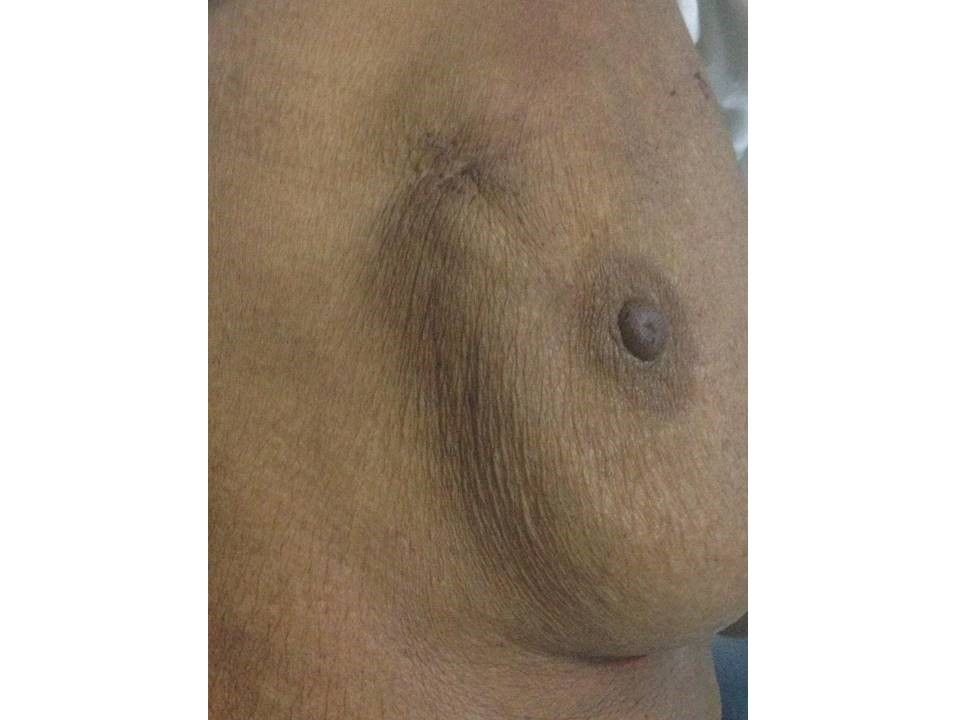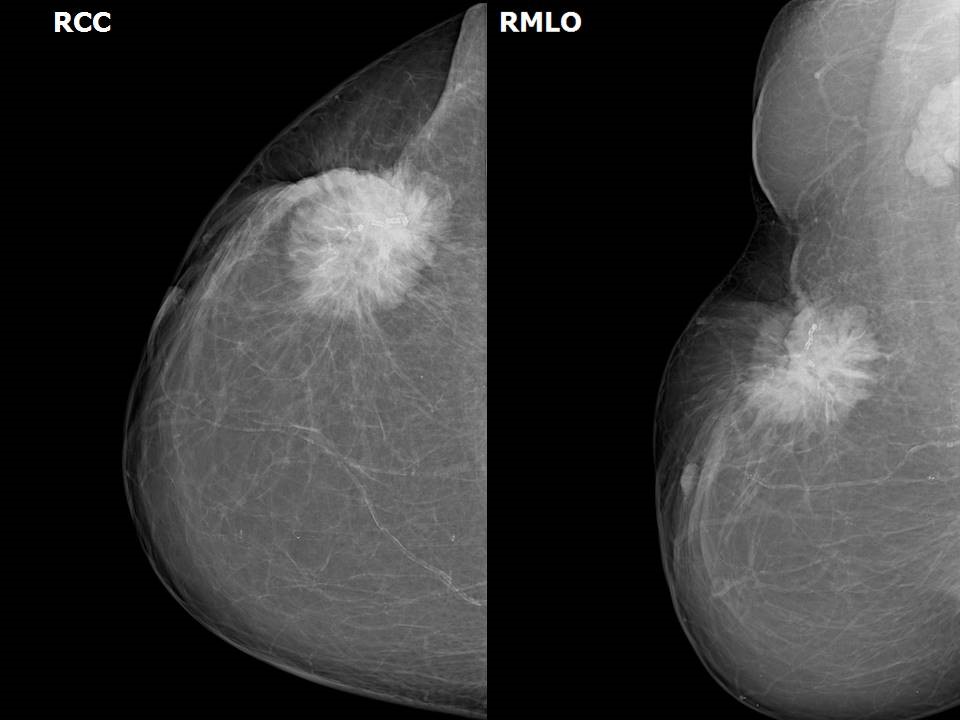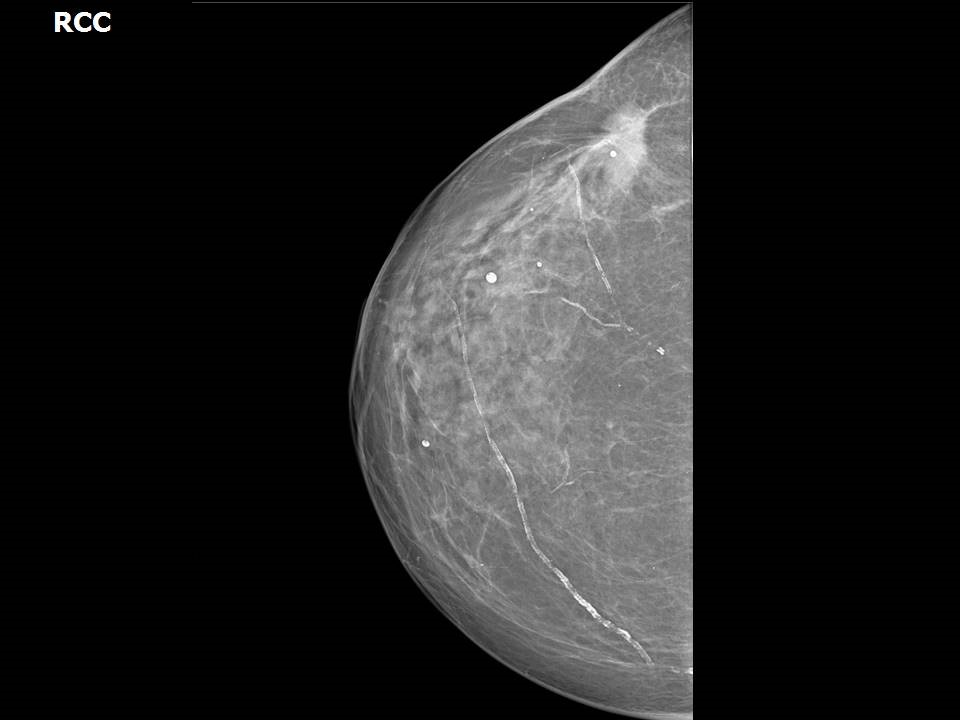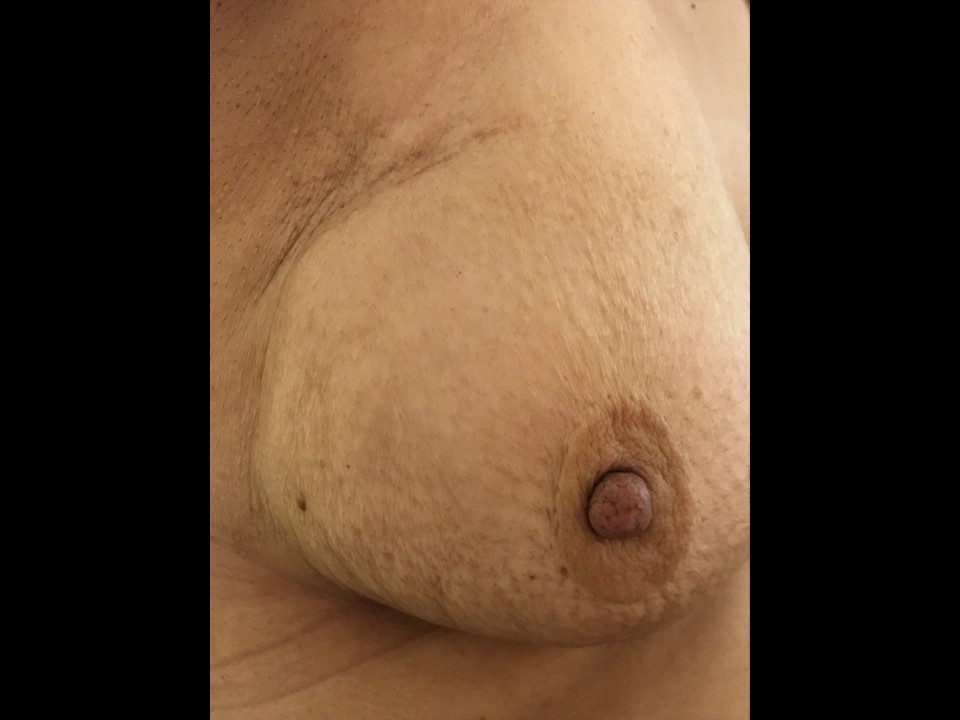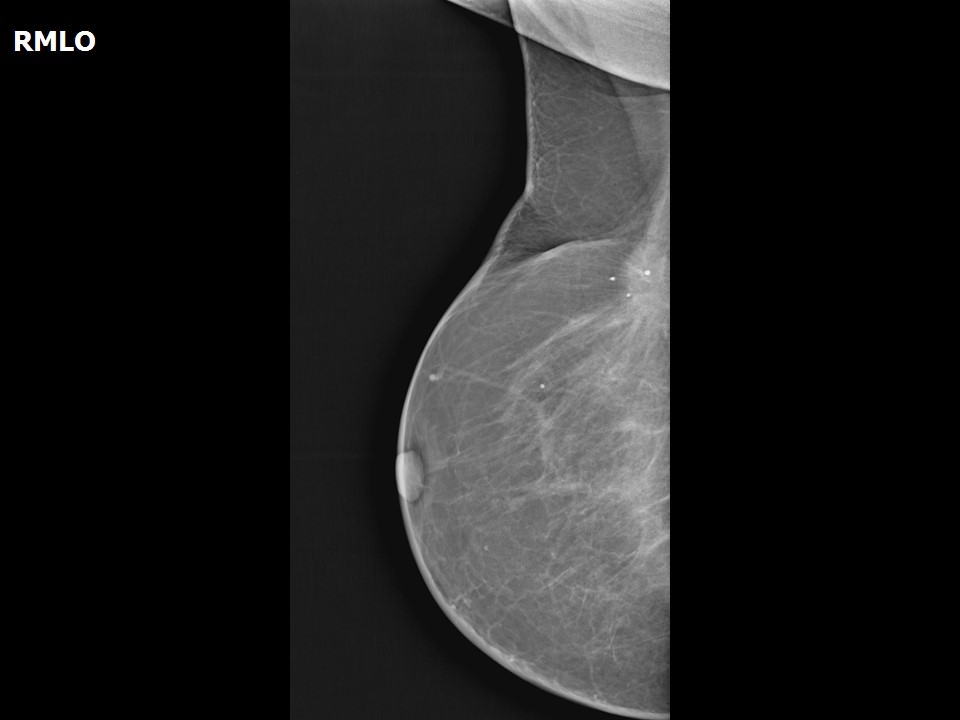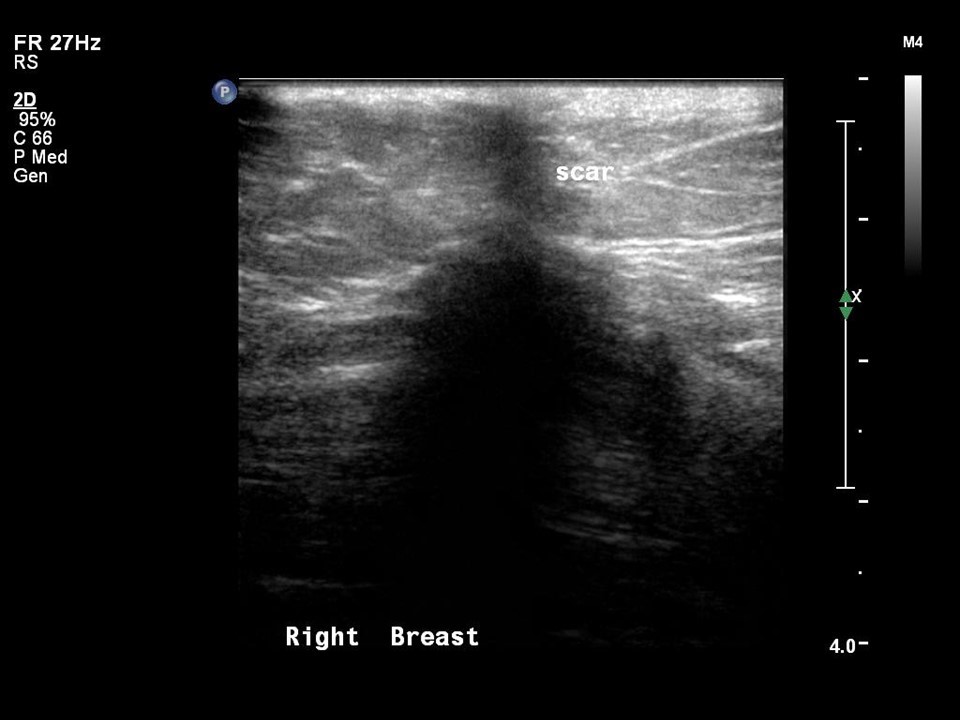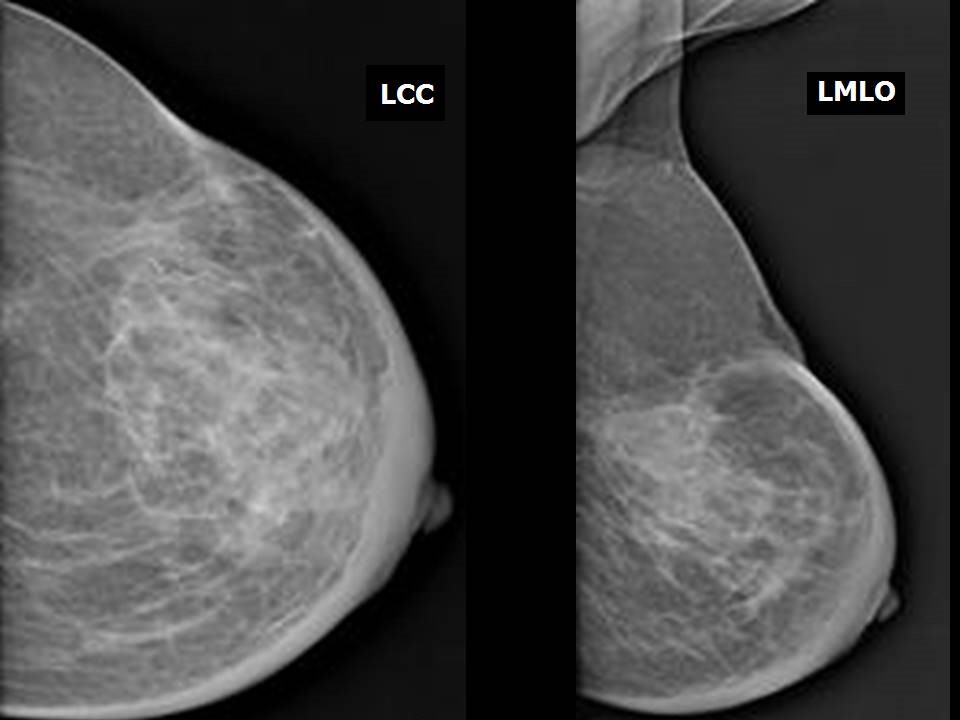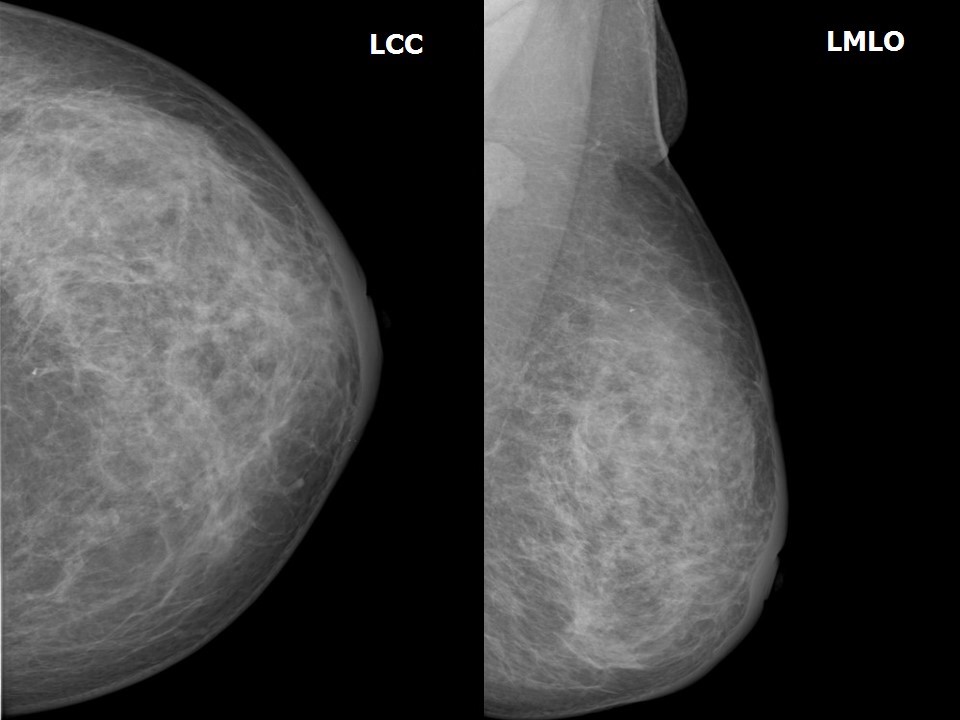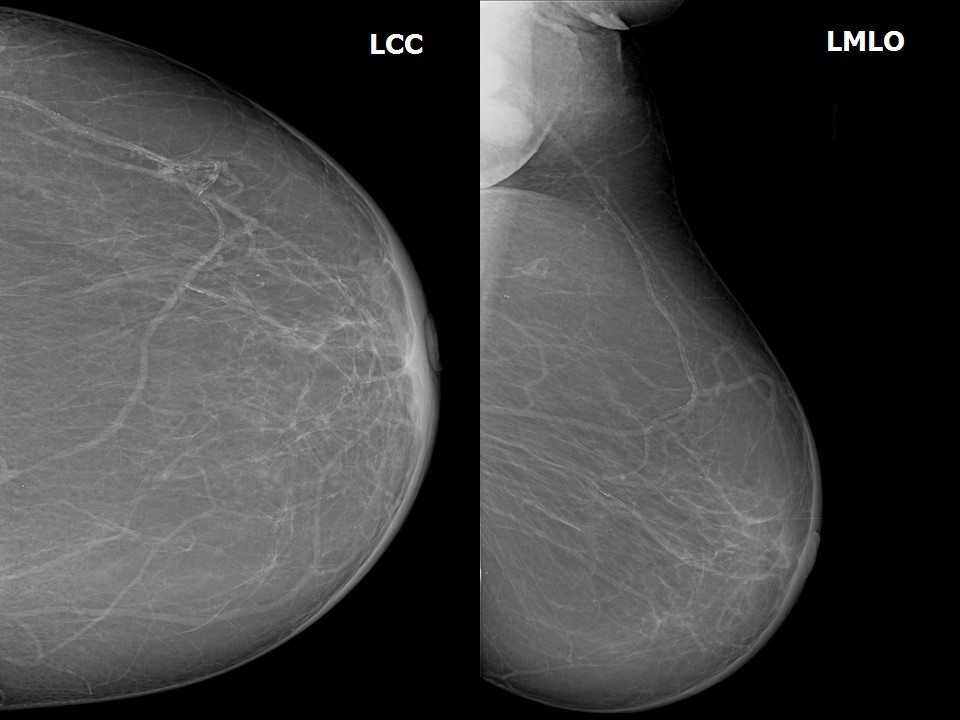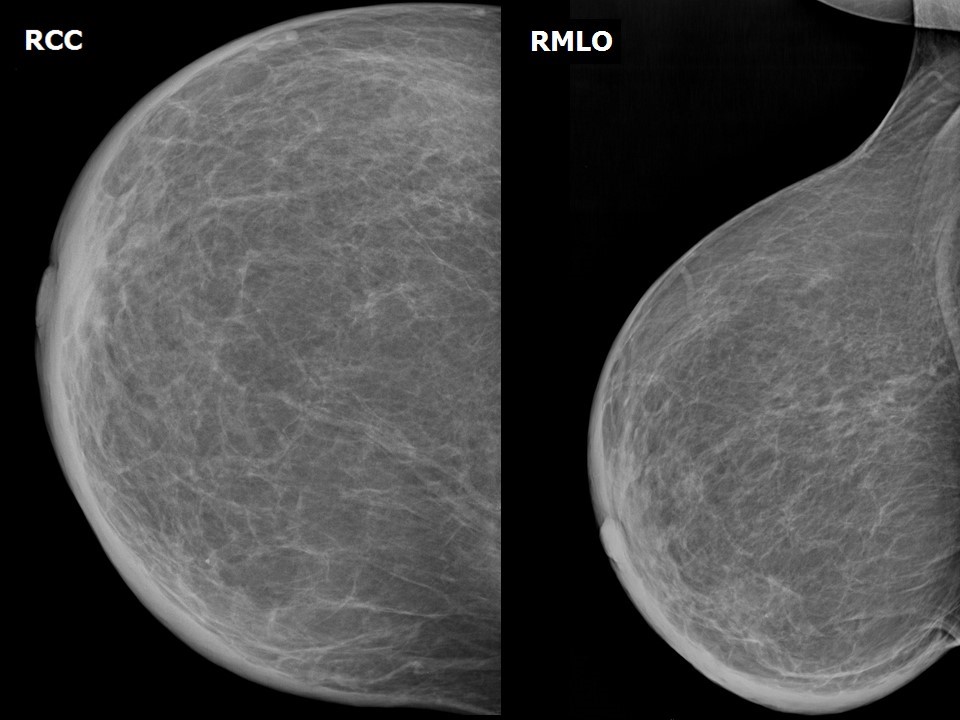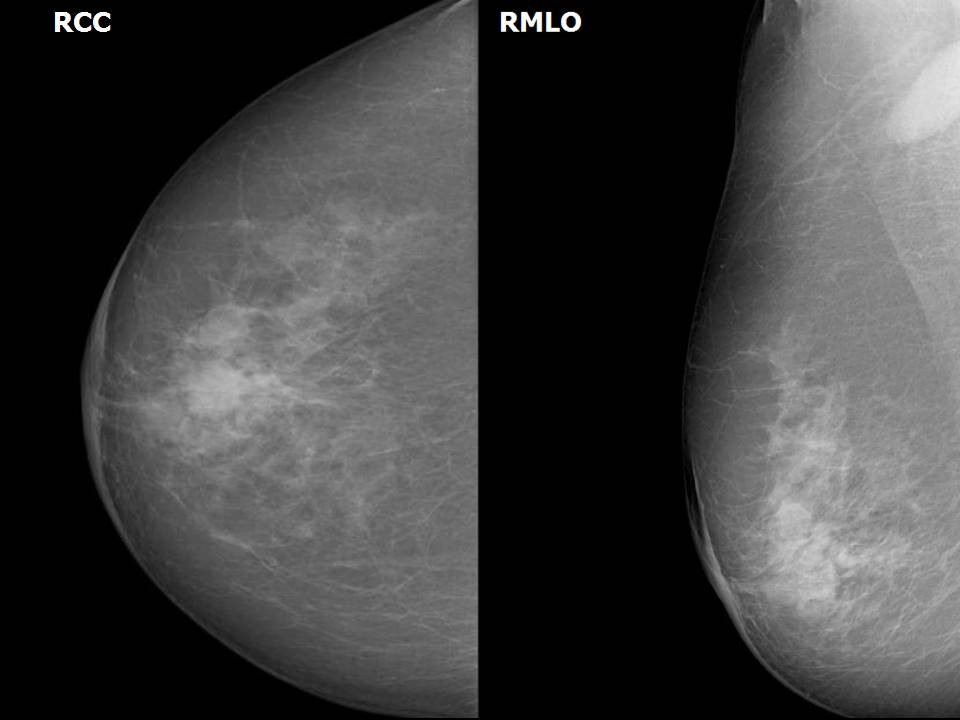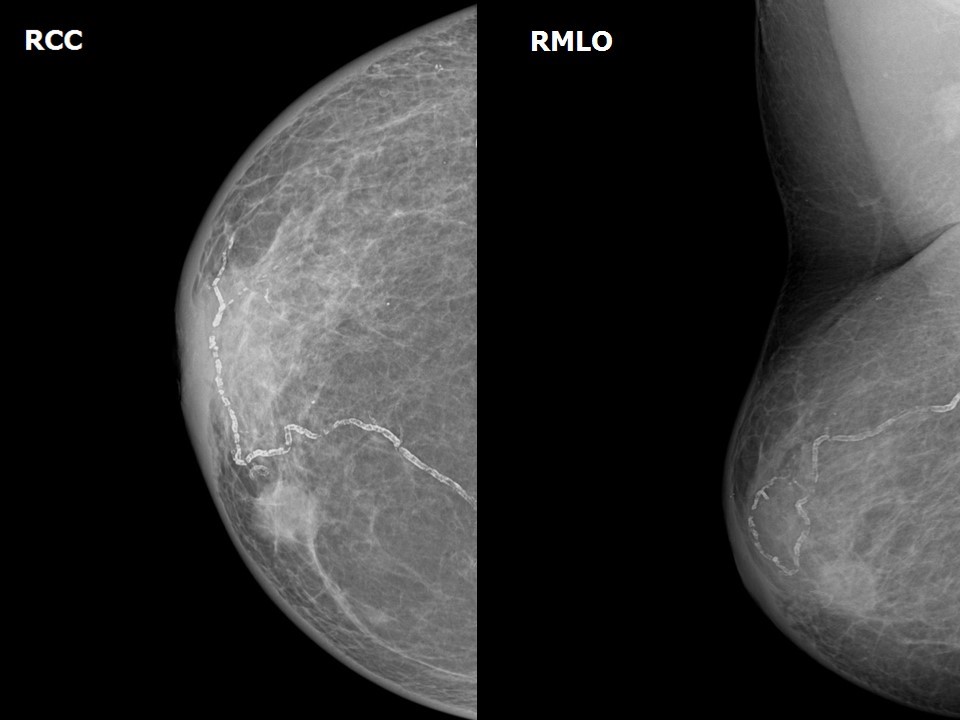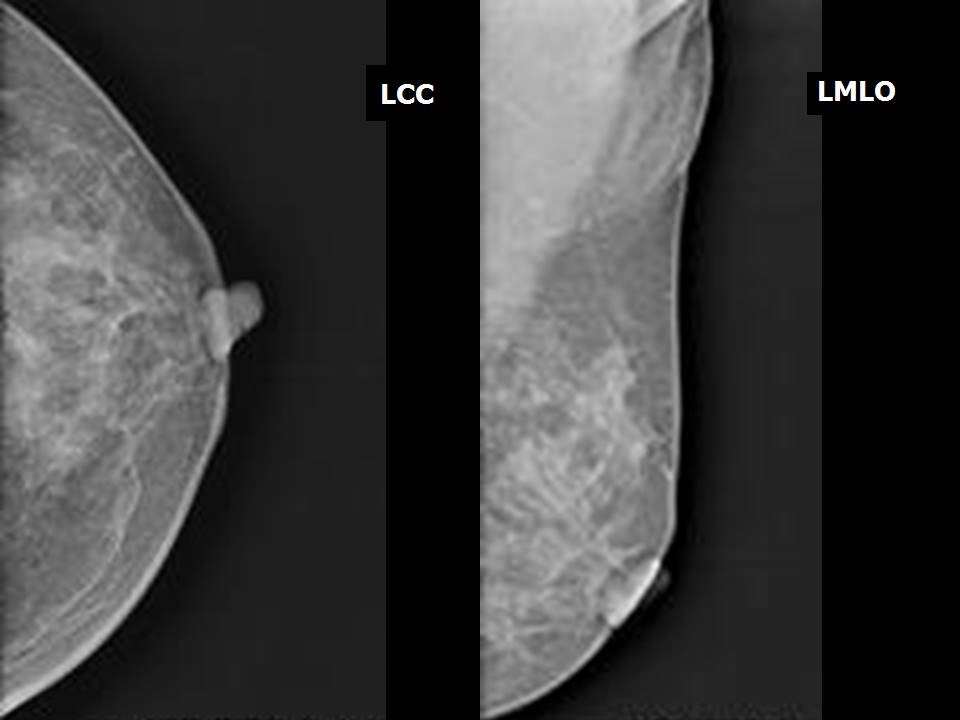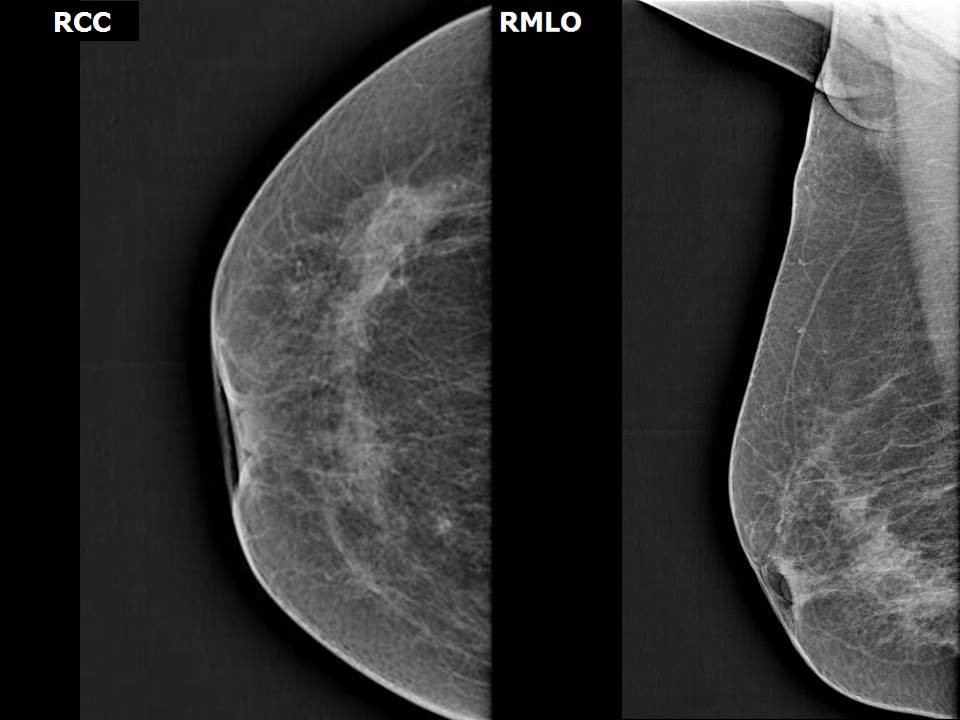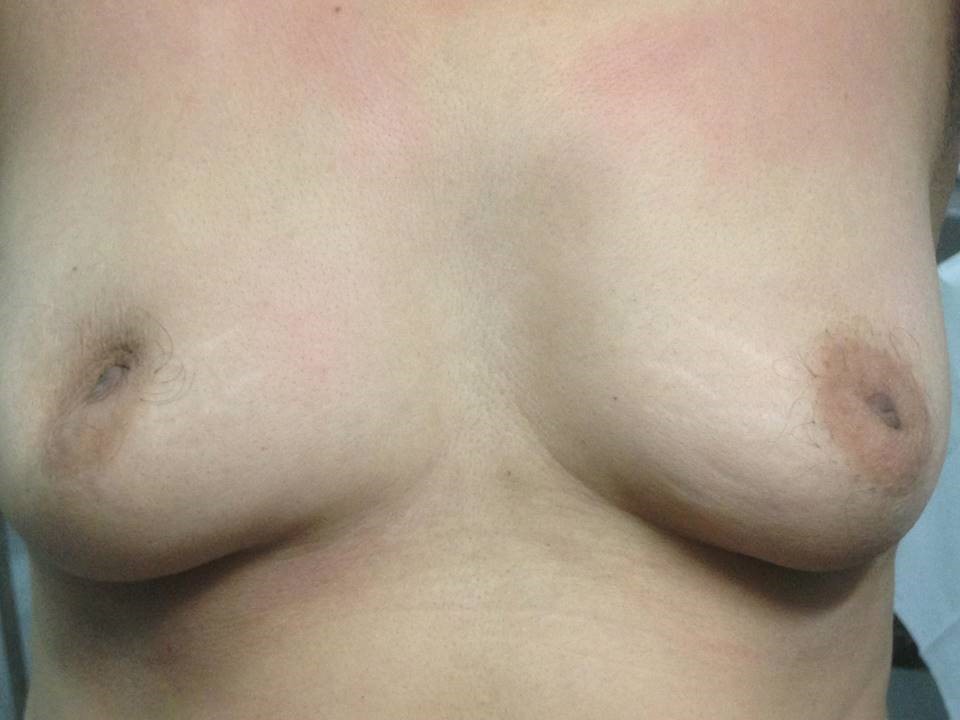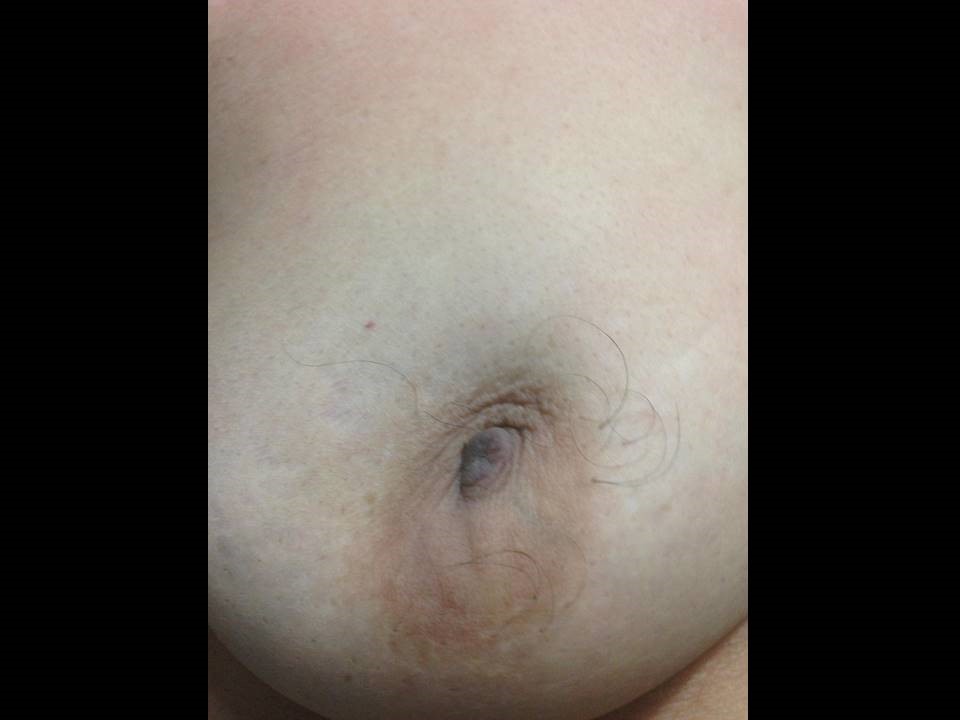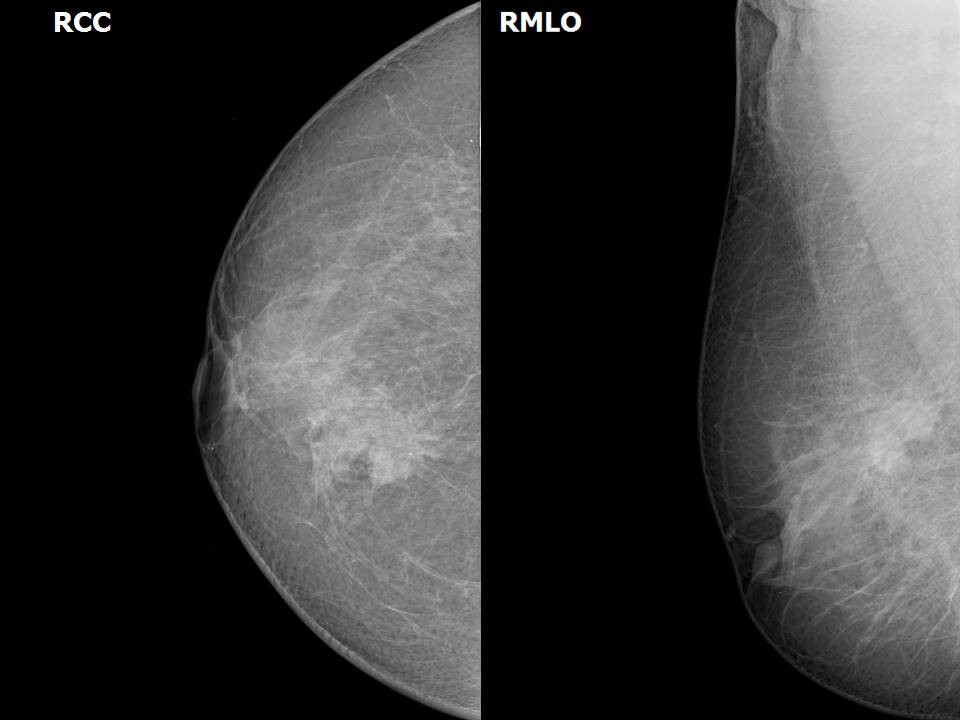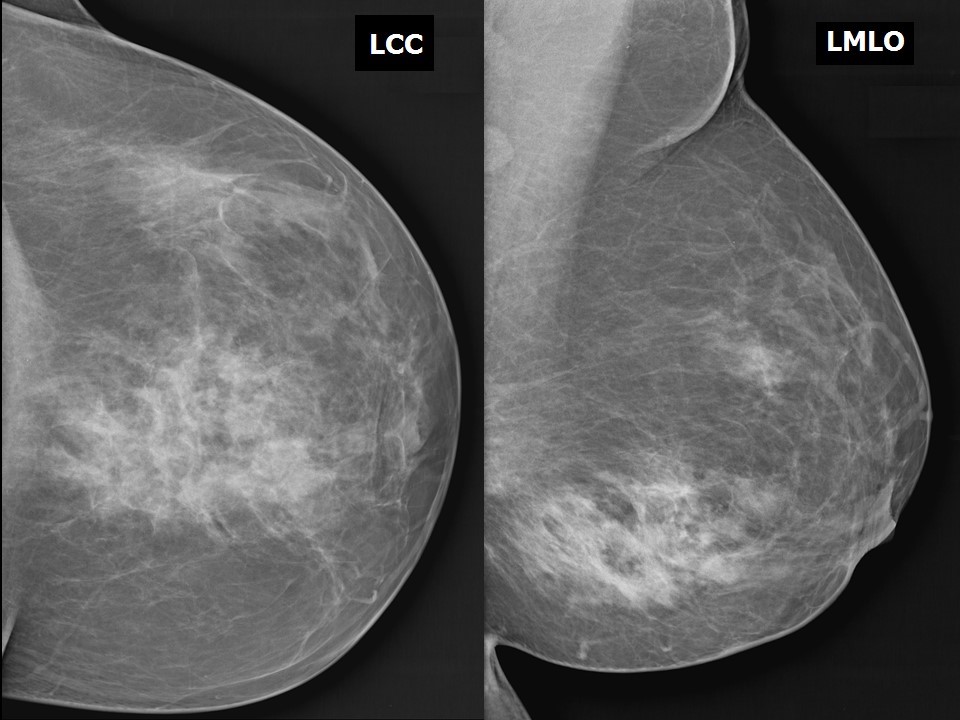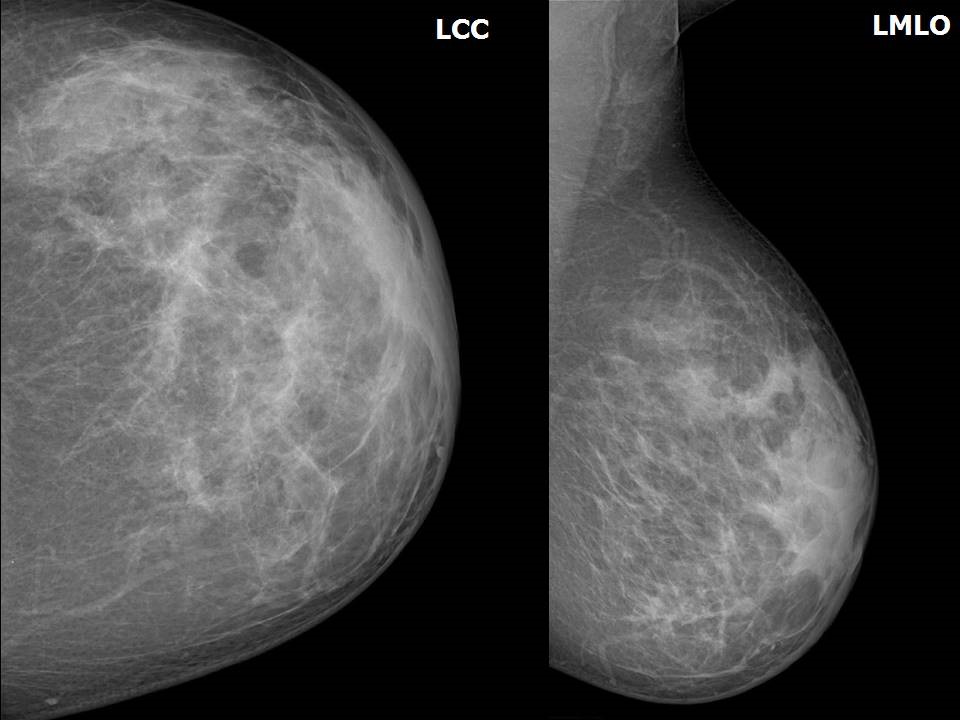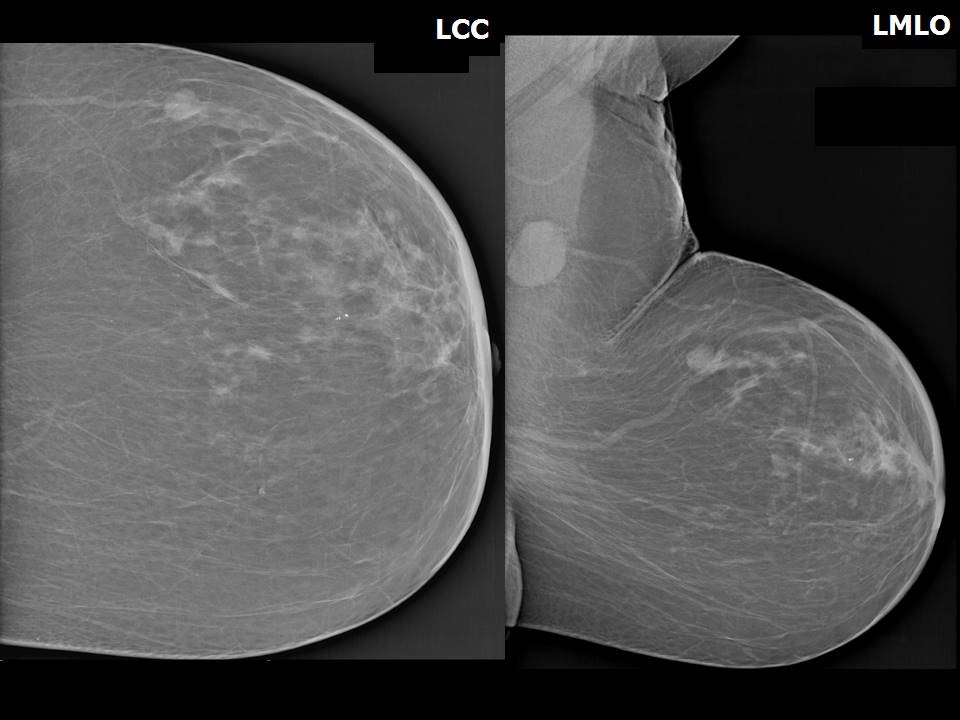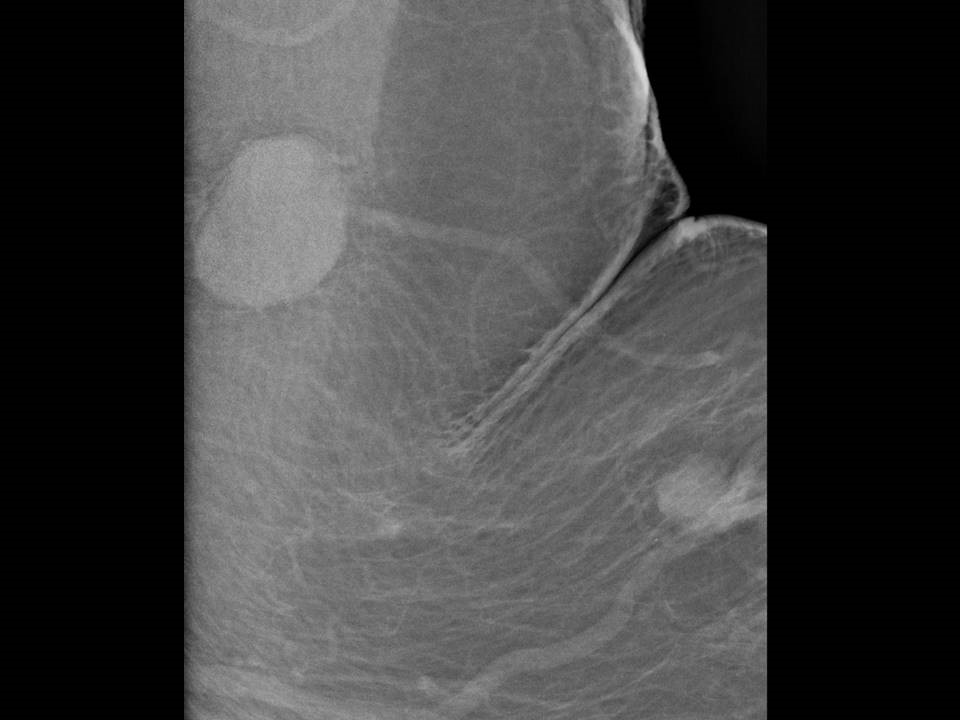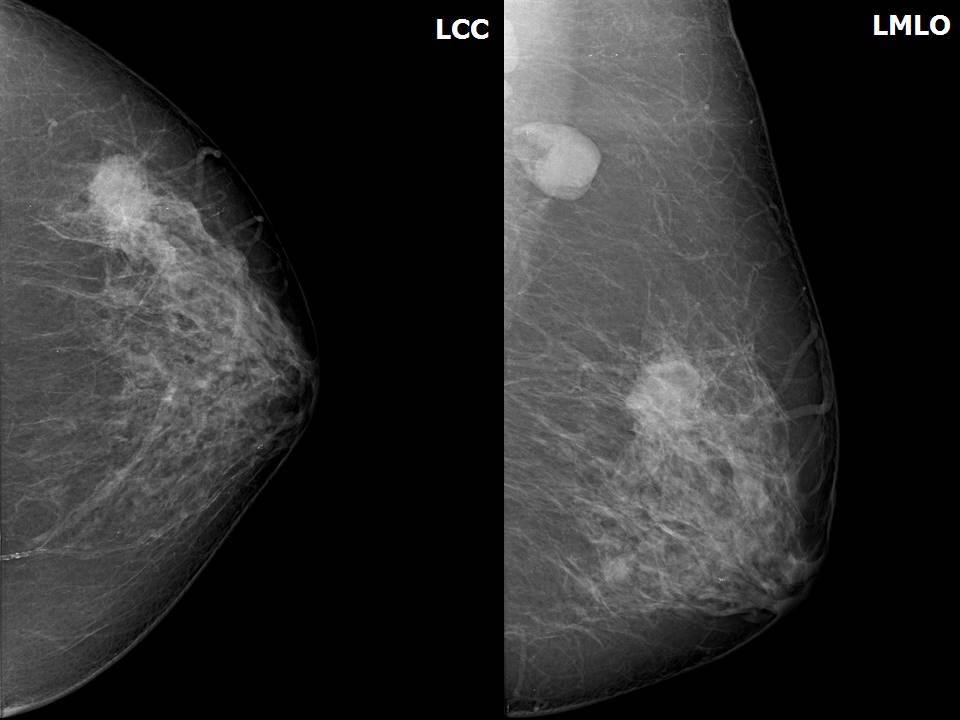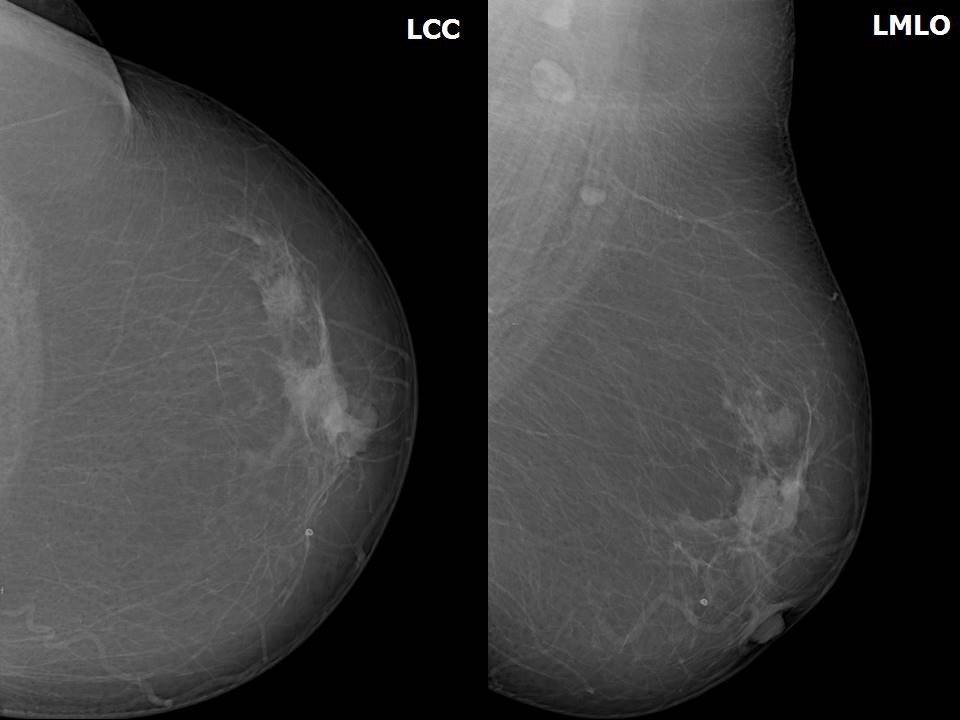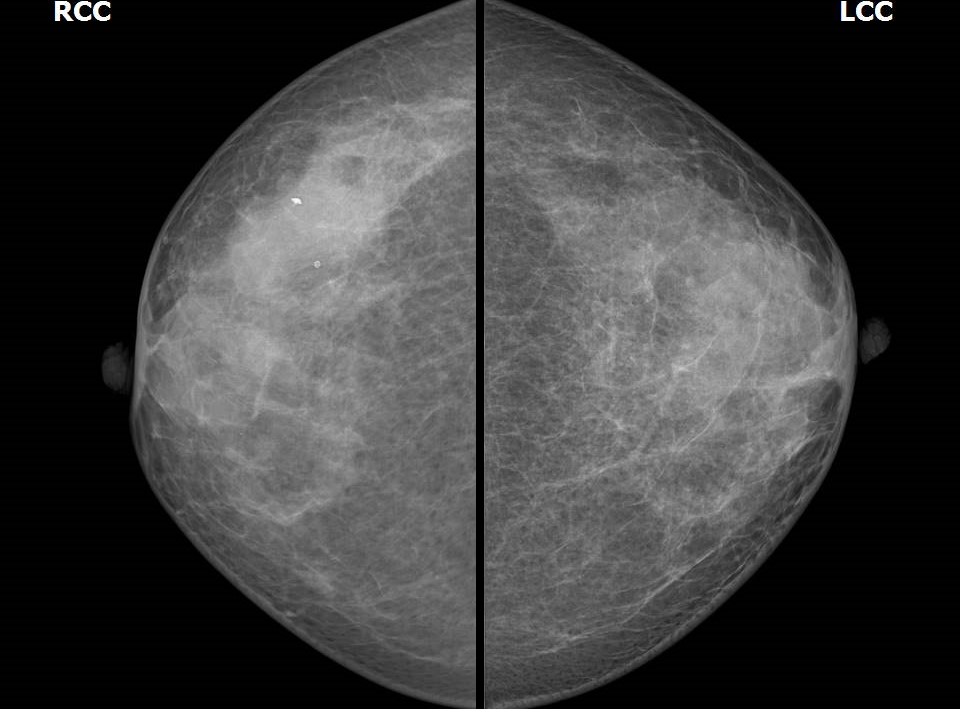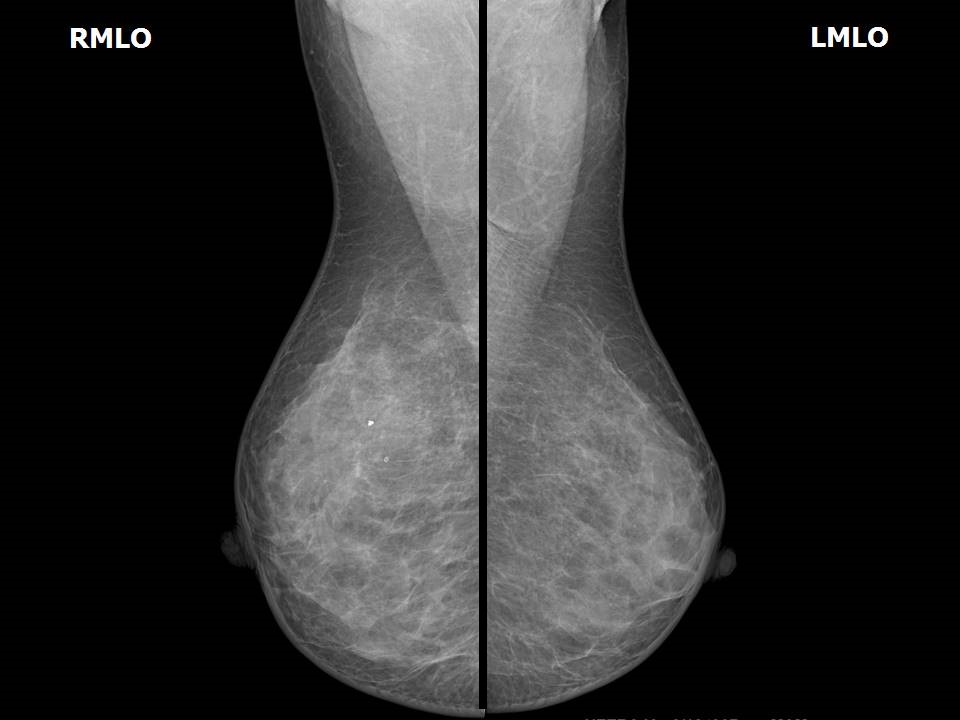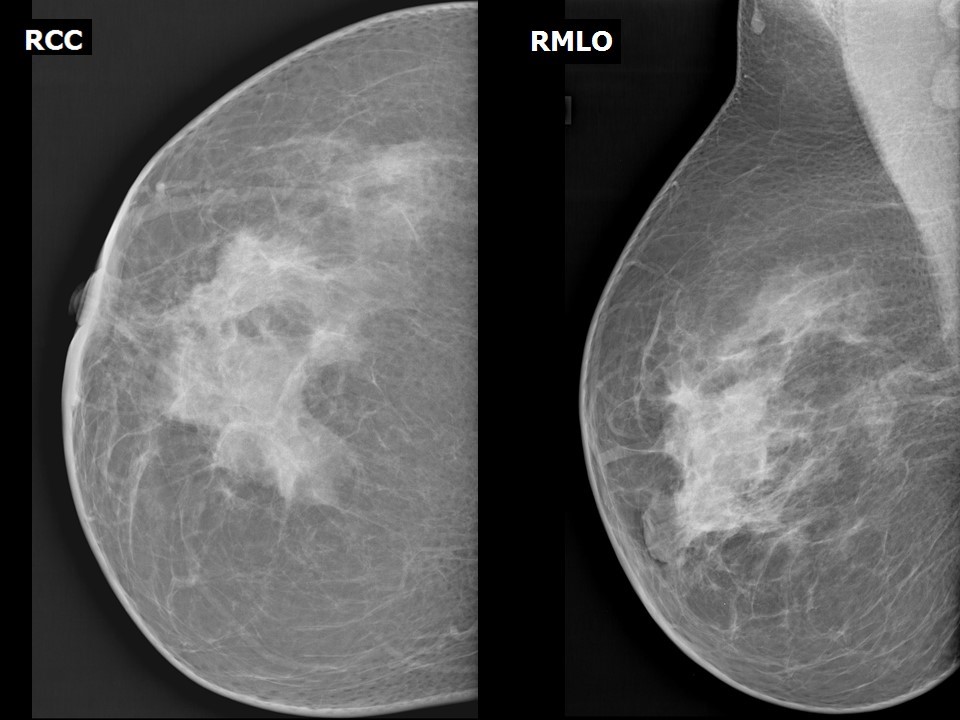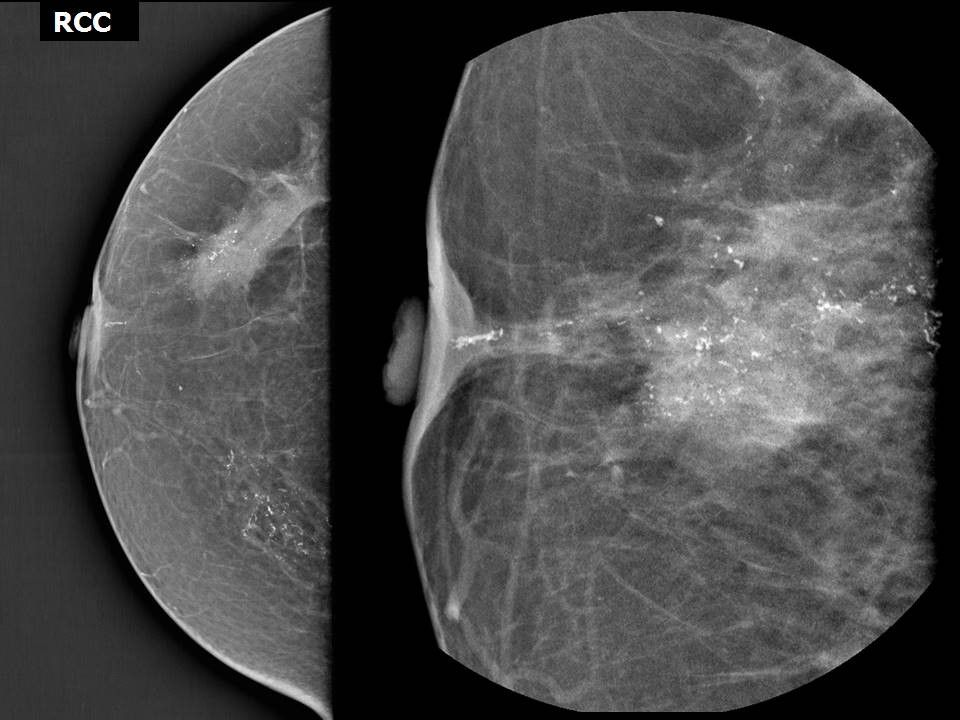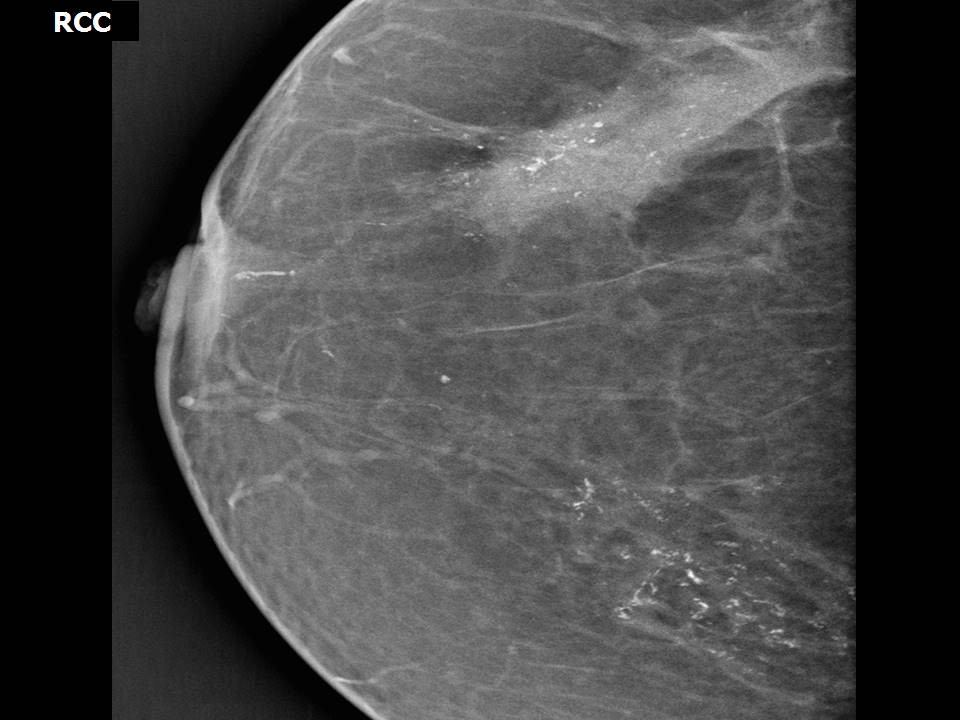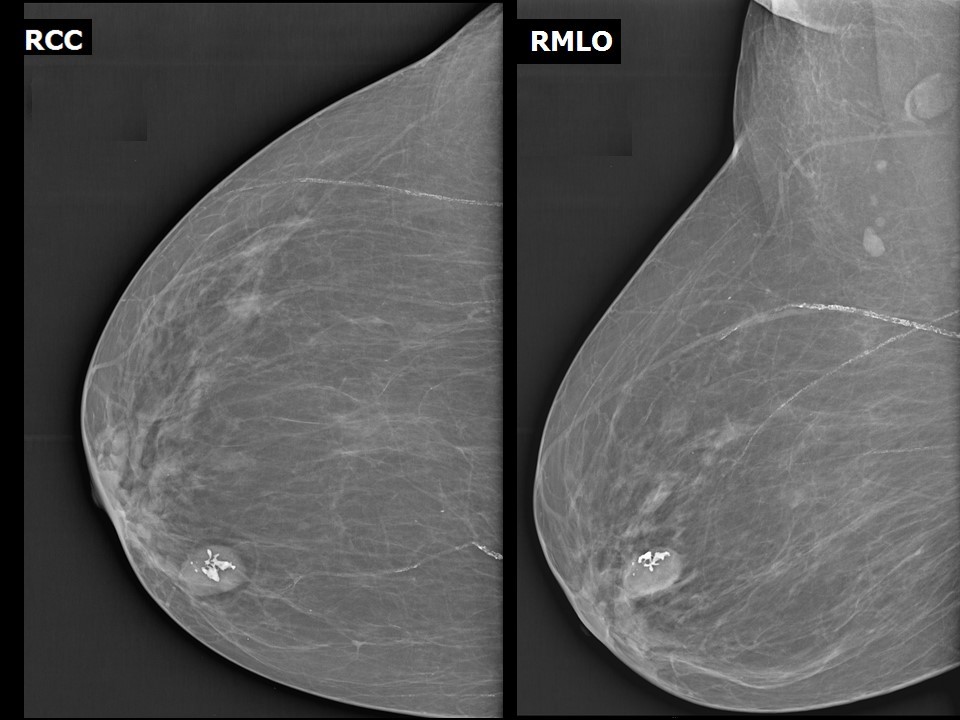Associated features of the BI-RADS Lexicon are additional mammography findings that
play a role in the final assessment when seen in association with a mass, an area of asymmetry, and/or calcifications.
Skin retraction
Skin retraction associated with breast cancer is seen as a late change and will be clinically evident  .
Postoperative skin retraction
Postoperative skin retraction may be seen in patients who have undergone breast-conserving surgery  .
Skin thickening in breast malignancy
Skin thickening caused by other diseases
Bilateral breast skin thickening can be caused by:
- congestive cardiac failure;
- dermatological conditions (e.g. psoriasis or scleroderma);
- anasarca; or
- bilateral breast carcinoma (rarely)
Nipple retraction
Nipple retraction is caused by scarring and contraction of the fibrous supportive tissues (e.g. ligaments of Cooper) of the breast stroma caused by the underlying pathology. Nipple retraction is either horizontal or vertical.
- A horizontal slit is most likely benign pathology caused by periductal mastitis and fibrosis. There is no underlying mass and no sign of cancer
 . .
- Vertical nipple retraction is caused by contraction of the fibrous structures and suggests an underlying cancer, which pulls the nipple upwards in the direction of the mass
 . .
Normal nipple seen in profile
Physiological nipple retraction, grade 3
Pathological nipple retraction with underlying breast carcinoma
Axillary lymphadenopathy or enlarged lymph nodes
- breast carcinoma
 ; ;
- lymphoma;
- chronic lymphoid leukemia;
- infection
 . .
Intramammary metastatic node  :
- Nodal metastasis may also be seen involving the intramammary node of the ipsilateral breast.
- The metastatic intramammary node will be enlarged with altered morphology features including altered shape and density, thickened cortex and / or loss of fatty hilum.
- Presence of intramammary metastatic node may suggest further axillary nodal metastasis.
Architectural distortion
Architectural distortion with underlying primary mass is suggestive of extent of the disease process. Architectural distortion can be seen with breast cancer and also with non-malignant disease process including infective, inflammatory breasts and breast trauma  .
Architectural distortion in breast cancer
Architectural distortion in breast inflammation
Architectural distortion in breast trauma
Calcifications
Intraductal calcifications are representative of duct carcinoma in situ (DCIS)  . Calcifications of suspicious morphology seen with a mass categorise the lesion as malignancy. Calcifications of benign morphology categorise the mass as benign lesion.
Malignant calcifications
Benign calcifications
| .png)





